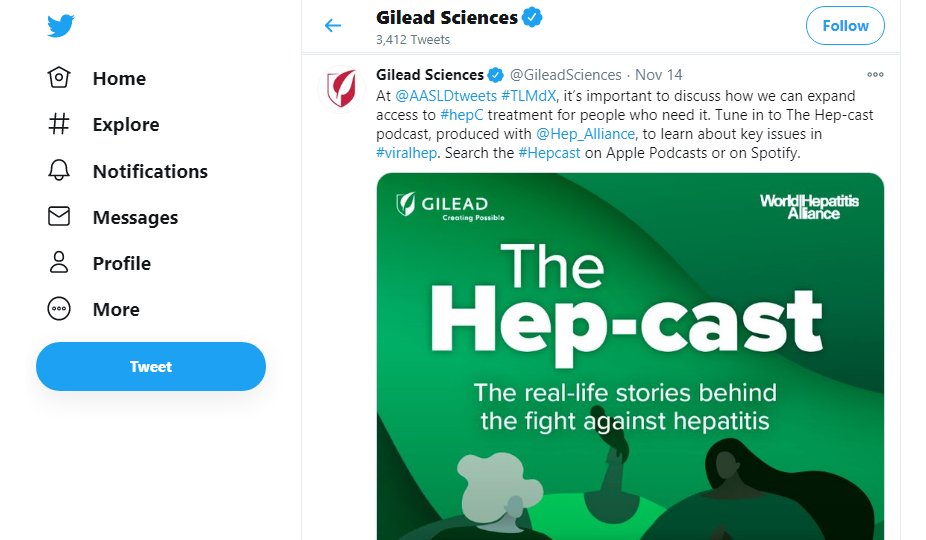Experienced science content writer Christopher Oseh provides a guide to life science content marketing for biotech & pharma companies, including content types, SEO guidance and more.
An effective content marketing strategy promotes consistent brand communication with a target audience, builds credibility and trust with these audience while keeping in view the goal of the content. Customers that regularly engage with content from a biotechnology company are more likely to perceive the company as experts in their industry. According to a study, it was discovered that 80% of prospects prefer to learn about a company by engaging with their content. Also, most prospects may not have adequate information about the benefits and how biotechnology companies use technological advances such as gene editing technology called Clustered Regularly Interspaced Short Palindromic Repeats (CRISPR) and artificial intelligence in the production of biotechnological products. The creation and distribution of quality content coupled with multi-media case studies created by freelance medical writers about these technological advances in biotechnology industry will bridge this knowledge gap.
What is an effective life science content marketing strategy for biotech & pharma companies?
Biotechnology companies that consistently publish the right type of content and leverage on content marketing strategies will attract their potential customers and build relationships with them that transform into sales eventually.
Without an effective life science content marketing process, creating quality content will be futile notwithstanding the time and resources used in the content creation.
Here are 7 essential steps in the content marketing strategy process:
- Content goals: Decide specifically the goals you hope to achieve with the content you intend to publish and when the goals will be achieved. Set milestones for your goals and choose how to track your activities required to achieve your goals.
- Define your audience: Outline specific characteristics such as pain points, challenges, problems and needs that match your audience. Biotechnology companies can use surveys to identify common medical conditions clients have and if existing clients have problems using the company’s specific products. This step determines the type of content to create so that your audience engages optimally with your content. Thereafter, you can communicate your brand and products to potential new clients because of the credibility developed initially.
- Content research and plan: This entails using specific research tools to discover what topics your ideal audience are interested in. After creating a list of audience targeted topics, you enter each topic into a calendar to remind you of the date to publish each topic.
- Intentional content creation: Create content that communicates with your audience at every stage in the customer’s journey. For instance, a biotechnology company can create a search engine optimized content about antibiotics or vaccines. The content may be in form of a white paper or blog post that explains everything about antibiotics/vaccines from the fundamentals to the technical aspects for prospects at any customer stage to engage with. Multimedia content (short videos and infographics) are better for social sharing.
- Content distribution: It involves showing your content at specific places where your ideal audience can easily see your content and engage with them. For instance, visual content will be more appealing on social media channels like Instagram and Pinterest while LinkedIn favors text based content. Apart from social media, display your content using sponsored ads and in publications where your audience would see them.
- Content performance analysis: Analyze all the content published within a defined duration to clearly identify top performing content and to focus only on them. This reduces the time and other resources spent on creating content that your audience do not engage with. Measure common content indices like the number of unique visitors, likes, shares, comments and leads.Read also: How to outsource your medical and scientific writing
Life science content marketing for biotech & pharma: Types of content
Case studies
It is a type of content that involves conducting an interview with customers who have used your products and services. Successful content marketing with case studies involves storytelling and these elements below:
- Asking the right questions: Ask your customer questions that enable them to talk about their journey from discovering your product to the specific outcome they received by using your product.
- Use multimedia content: Customers engage with content in different forms; some might prefer images or videos apart from Thus it is essential to create case study content that are in different formats to capture a wide range of prospects.
- Create a resource page: A resource page containing different types of case studies for your products helps to build credibility and acts as social proof for your potential customers.
White papers
White papers are one of the most common type of content used by biotechnology companies. According to a survey, 56% of clients prefer to read downloadable white papers in the form of e-books.
A white paper is a compelling special report written to provide solutions to problems faced by a target audience. It can be written by a subject matter expert or by interviewing an expert. Customers who use biotechnology products such as novel vaccines or drugs might be concerned about the safety profile and other information about the new product. Subject matter experts use white papers to convince clients about company products by using relevant research findings and credible data. Also, a white paper can also focus on possible solutions to specific medical conditions faced by your target audience. Most biotech and pharma organizations are now outsourcing their whitepapers to experienced freelance content writers.

The image above shows a collection of downloadable product specific white papers on the product page of Amgen Biotechnology Company.
Press releases and blog posts
Biotechnology companies are constantly researching, innovating and developing new products that will benefit their target audience. Press release content is a great way to communicate any event, product launch, company news or industry- related discoveries to the public. A press release must have the following elements:
- Strong and attractive headline with a news hook.
- Sub-heading that shows the benefits to the readers.
- Body which clearly communicated facts, quotes and figures with images.
- Company information.

Image above shows the press release page of Pfizer
Blogging is an essential form of content for a target audience to trust and perceive companies as experts in a specific niche. According to a recent study by SEMrush, 86% of companies prefer to use blog content unlike other content types.
For blogging to be effective, long form blog posts, a mixture of “ How To” and Lists Headlines have been proven to yield a better return on the objectives set for the blog post.
Social Media Posts
Major biotechnology companies publish their content on social media channels like Facebook, Twitter, Instagram and LinkedIn. Each social media channel has its unique feature for publishing content. For example, Twitter allows only 280 characters per tweet.
Social media channels are for interaction and more suited for short catchy content with well-designed images and short videos. Also, specific hashtags and mentions related to a specialty should be added to social media posts to reach a target audience.
To maximize your exposure on social media, images containing blog post excerpts or news should be published with a link to the company website. This helps to direct social traffic to the website where visitors can interact with other content, become lead that can be converted to a sale eventually.
This is an organic strategy which is depicted in the image shown below.

Image above shows the Twitter handle for Gilead Life Sciences. Note the use of twitter hashtags and the mentions used in the twitter post.
Read also: How to hire freelance content writers in Biotech and Pharma organizations
Why biotech companies should outsource content marketing
Content marketing processes as highlighted above goes beyond creating quality content. The entire content marketing process requires specialized knowledge from an experienced content strategist.
Also, outsourcing content marketing strategy to freelancers is more cost effective and provides the same return on investment compared with a employed content strategist.
Accessing freelance medical writers on freelance platforms like Kolabtree provides the added advantage of selecting quality medical writers from a diverse pool of experienced writers.
Read also: 5 benefits of hiring life science consultants (Biotech/Pharma)
Conclusion
Biotechnology companies need content marketing to reach their target audience and to communicate clearly with them. There are different types of content but white papers, press releases, blog posts and social media posts are among the most common types of content used by major biotechnology companies.
An efficient and productive way of creating top performing content is by hiring freelance medical writers with proven track record of effectiveness.
Need help from a freelance life science content writer? Outsource to experienced industry experts and PhD-qualified writers on Kolabtree. POST A PROJECT NOW
REFERENCES
- https://www.convinceandconvert.com/content-marketing/how-to-create-a-white-paper/
- https://coschedule.com/blog/how-to-write-white-papers-templates-examples/
- https://blog.hubspot.com/blog/tabid/6307/bid/33282/the-ultimate-guide-to-creating-compelling-case-studies.aspx
- https://neilpatel.com/blog/creating-a-great-case-study/
- www.convinceandconvert.com/content-marketing/b2b-content-marketing-statistics/
- www.hubspot.com/marketing-statistics
- https://www.demandmetric.com/content/content-marketing-infographic







